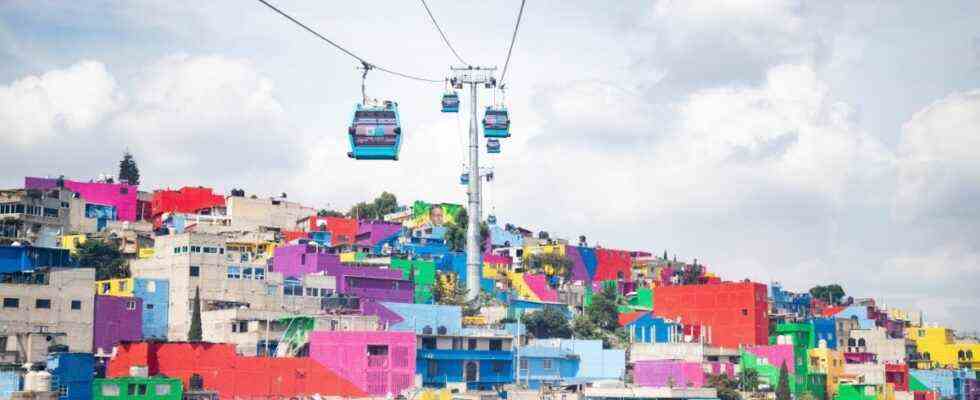So far, Europeans associate one thing with the cable car: local recreation. In the mountains or areas with sights such as Koblenz, this means of transport has served us well for decades. And as soon as a garden show or other open-air event is coming up, those responsible seem to be happy to set up a cable car and then often dismantle it again as quickly as possible after the end of the event, as happened at the Expo in Hanover in 2000 or after the garden show in Rostock in 2003. Only the cable car, which was built over the Gardens of the World in East Berlin for the International Garden Show 2017, is still running and is to be integrated into the capital’s public transport system at some point.
In the metropolises of South and Central America, on the other hand, the cable car has established itself as a reliable, traffic-free means of transport. In the Bolivian city of La Paz/El Alto there is the largest urban cable car network in the world with eleven lines. There are other networks in Medellin, Colombia, as well as in Mexico City. Another urban cable car was recently opened in Guayaquil.
Many reservations in Europe
European cities, on the other hand, have difficulties with transport. An important argument against this is often that one could look into gardens and apartments from above. Still, interest seems to be growing. Last November, for example, the Bavarian Ministry of Transport issued test orders for several cable car routes in Munich. A commuter cable car is under discussion from Grünwald to Pullach, and another route could lead from Pasing via Gräfelfing, Martinsried and Neuried to Fürstenried West. In summer 2021, the city council in Regensburg also discussed a possible cable car for local urban transport, but so far without any tangible result.
A cable car is scheduled to go into operation in Toulouse this year.
(Photo: Leitner)
In France, on the other hand, the opening of the first urban transport line is imminent: A line is scheduled to go into operation in Toulouse this spring; it links the Oncopole Cancer Research Institute with the Rangueil Clinic and the Paul Sabatier University. Three kilometers, three stations – and according to the future operator’s self-promotion, thirty times less air pollution than with comparable car traffic.

